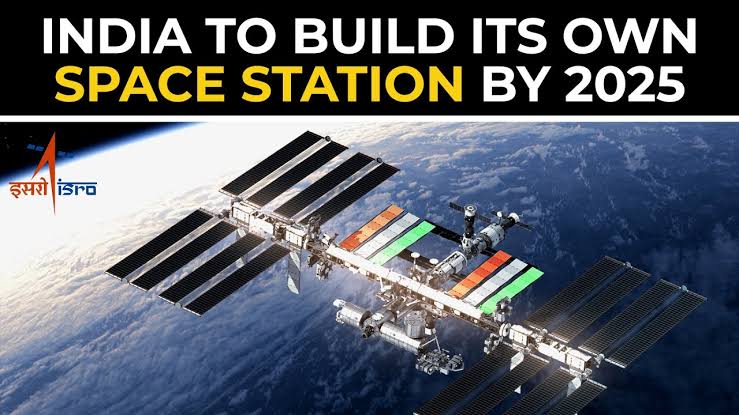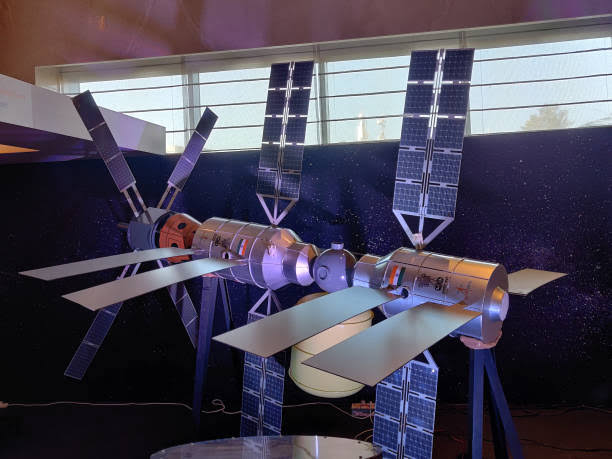ISRO Space Station: Humans have been able to conquer space by building a huge and heavy space station that is insanely costly with cooperation of many countries.
Building a space station is not an easy task but it’s not impossible as China and Russia recently built another space station called Tiangong Space Station without the help of any other country.
It is difficult for a developing country to even conduct space programs so the building of a space station is out of the question. But that’s not the case with India, since it has experience and the country is filled with skilled scientists and engineers, we have been able to do what many developed countries can’t do.

In this article we will tell you how K. Sivan and the Indian Space Research Organization (ISRO) plan to launch Aditya-L1 and other projects which are under work.
India’s Success In Space Explorations
India’s space aspirations have increased as a result of the Chandrayaan-3 mission, which saw the Vikram lander and Pragyan Rover successfully complete their missions on the moon. The mission was launched on July 14 and successfully completed a soft landing on the moon’s surface on August 23.
Following this accomplishment, ISRO is now concentrating on expanding its human spaceflight capabilities through the Gaganyaan program. This program aims to launch astronauts into space, which will be a big step towards building a space station.
ISRO Chief Reveals Big Plans Building ISRO Space Station
After the successful landing of the Chandrayaan-3 mission, the Indian Space Research Organisation (ISRO) has its sights set on challenging space exploration projects.
ISRO Chairman S. Somanath stated in an interview with CGTN that the space agency is looking into a number of options for upcoming missions, including the building of a space station and extended human spaceflight.
After the Moon mission’s success, Somanath stated, “We are looking at all the possibilities.” We are investigating the type of science you can conduct. We are investigating whether the space station will help the Indian space industry.
India’s First Manned Space Mission
In the near future, Somanath said, “We must begin construction of a Space Station and begin with robotic operation. We are still working on having manned flight capability.”
“In the next 20 to 25 years, we will be able to consider building the Space Station in subsequent modules as the Gaganyaan program works towards human spaceflight capability.”
Long-duration human spaceflight and manned exploration were also mentioned by Somanath as potential future goals for ISRO. India would be able to join the ranks of nations that have already made a name for themselves in human spaceflight, including the United States, Russia, and China.
With the successful conclusion of the Chandrayaan-3 mission, the company has demonstrated its capacity to carry out complex missions, opening the door for more ambitious projects in the future.
Related: What is ISRO Gaganyaan Mission?
The Gaganyaan Mission By ISRO
The goal of the Gaganyaan mission is to send three Indian astronauts into space for a three-day stay. The astronauts will orbit the planet at a height of 400 kilometers before returning to it in a secure manner.
The Indian Space Research Organization (ISRO) is working on the project in collaboration with Indian academic, business, and research institutions as well as with outside organizations.
Many new technologies have to be developed for the Gaganyaan mission, including a launch vehicle fit for carrying humans safely, a life support system, and a crew emergency escape system. Before sending astronauts into space, technology must be tested to guarantee its dependability and safety.
This would be done through unmanned missions like Test Vehicle (TV) flights, Pad Abort Tests (PAT), and Integrated Air Drop Tests (IADT). These missions give us a better understanding of our systems and a chance to fix any problems before astronauts take to the skies.
What is LVM3-HLVM3 Human rated?
The launch vehicle for the Gaganyaan mission is the ISRO LVM3 rocket, a well-respected and dependable heavy lift launcher. Solid, liquid, and cryogenic stages are all present.
To comply with human rating requirements, the LVM3 launch vehicle’s systems were all reconfigured, earning it the name Human Rated LVM3. The Orbital Module can be sent into a 400 km Low Earth Orbit with the help of HLVM3.
In case of an emergency, either at the launch pad or during the ascent phase, the Crew Escape System (CES) on the HLVM3 ensures that the Crew Module and crew are transported to a safe distance. A group of solid motors with a high burn rate and quick response time power the CES.
What is this Orbital Module?
Crew Module (CM) and Service Module (SM) make up the orbital module (OM) that will orbit the earth. Modern avionics systems with sufficient redundancy are included in OM, keeping human safety in mind.
The crew’s living quarters are located in CM, a habitable area with an atmosphere similar to Earth. With a Thermal Protection System (TPS), it has a double-walled construction with a pressurized metallic inner structure and an unpressurized exterior structure.
The life support system, avionics, deceleration systems, crew interfaces, and human-centric products are all housed there. For the crew’s protection during the crew’s descent and landing, it is also designed for re-entry.
Crew module will be supported while in orbit by SM. It is an unpressurized structure with thermal, propulsion, power, avionics, and deployment systems.
Gaganyaan Astronaut Training
A facility for training astronauts was established in Bengaluru and offers courses in flight suits, simulators, physical fitness, and classroom instruction.
Academic courses, Gaganyaan Flight Systems, familiarization with micro-gravity through parabolic flights, aero-medical training, recovery and survival training, mastery of flight procedures, and training on crew training simulators are all covered by the training modules. A portion of the training also includes yoga, periodic flying practice, and aeromedical training.
Conclusion
In this article we discussed ISRO Chief’s big plans of building ISRO Space Station. According to ISRO Chairman S. Somanath in an interview with CGTN, the Indian Space Research Organisation (ISRO) intends to construct a space station on its own. Although this is a challenging project, ISRO has a history of achievement in space exploration.
Being able to conduct its own independent space research and exploration would be possible for India after the construction of a space station, which would be a significant milestone for the nation. This could help to support India’s expanding space industry and offer a platform for international cooperation.
Thanks for reading!
